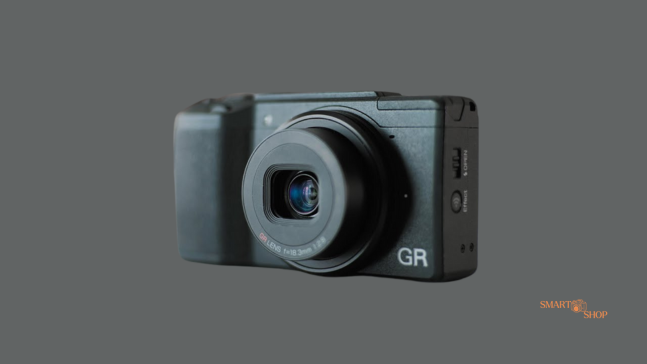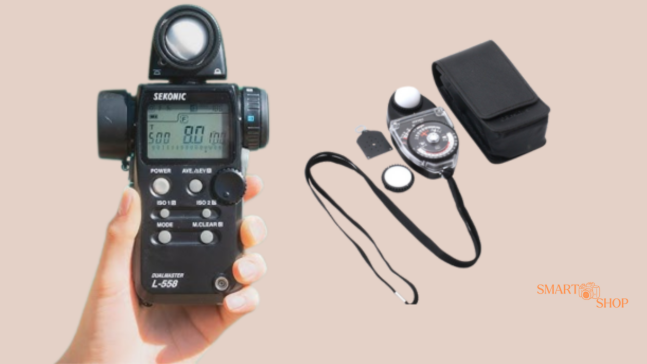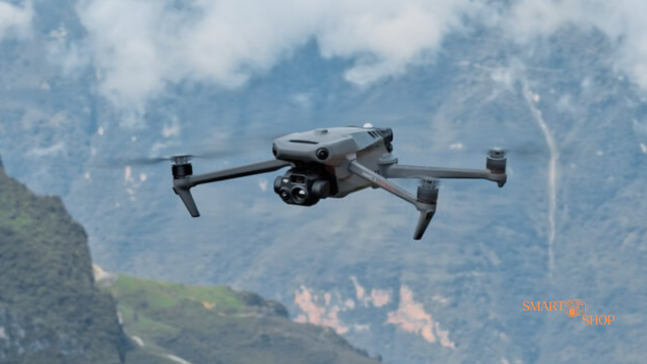Off Screen refers to actions occurring outside the camera’s view during a film or show. Off screen vs off camera, however, often pertains to moments when an actor is not in the frame but may still be performing.
The world of film and television is entirely of terms describing the magic behind the scenes. Two terms, “offscreen” and “off-camera,” may seem interchangeable, but they have different nuances. Offscreen actions are part of the production that the audience never sees, which may include behind-the-scenes decisions or events referenced by characters but never presented visually.
Meanwhile, off-camera is a technical term used during filming to indicate that an actor or object is not visible to the audience but can still influence the scene, such as providing lines for other actors to react to. These nuances are crucial for screenwriters, directors and actors as they shape the storytelling and viewing experience. Understanding the distinction enhances the public’s appreciation of the complexity of creating compelling visual narratives.
The Concept Of Off Screen And Off Camera
Two terms frequently appear in visual storytelling: offscreen and off-camera. These concepts play crucial roles in the narrative and the audience’s experience. Mastering offscreen and off-camera techniques can significantly influence viewer engagement and story impact.
Defining Off Screen
Offscreen refers to events that occur outside the current camera frame. The characters or objects are present in the scene but are not visible to the audience. This technique invites the imagination, creates tension, or suggests actions happening out of sight.
- Improves the audience’s imagination.
- Promotes narrative suspense.
- Indicates parallel stories
Defining Off Camera
Off-camera also involves invisible elements but specifically refers to sounds or voices that originate outside the frame. These sounds influence the scene’s atmosphere and often provide vital information or context.
| Characteristics | Impact |
| Background noises | Creates realistic ambiance |
| Dialogue | Drives the plot without visuals |
| Sound effects | Signals off-screen activity |
Historical Usage In Film And Television
The use of “offscreen” and “off-camera” has a rich history in film and television. These terms describe moments that are not shown directly on the screen. They add mystery and depth to the narrative. Let’s turn back the pages of time and witness how these techniques evolved in entertainment.
Early Cinematic Techniques
In early cinema, directors needed more resources. They got creative with offscreen spaces. This made viewers curious about what they couldn’t see. This is how they used this technique:
- Implied Action: Characters’ sounds and reactions hint at events happening offscreen.
- Off-camera focus: Actors would look or point offscreen, guiding the viewers’ imagination.
These methods allowed filmmakers to tell more significant stories than could fit in the camera frame.
Evolution In Television
Television brought new changes. He had to keep the attention of the viewers at home. Offscreen and off-camera, they began to play unique roles. This is what changed:
| Development | Impact |
| Repeated Characters | Characters referenced off screen became part of the ongoing story. |
| Commercial Constraints | Shows build tension before breaks by hinting at off screen events. |
These tactics kept viewers interested and eager for more.
Technical Aspects And Production
The right combination of camera work and sound design sets the stage for a film’s success. Behind each scene, a network of technical options hides. These choices capture the hearts of the audience. Let’s dive into how technical aspects like camera angles and sound design impact the production of offscreen and off-camera moments.
Camera Angles And Framing
camera angles and framing define the perspective of a scene. The directors choose them carefully. A right angle can tell a story without words. Here’s how angles affect offscreen and off-camera:
- Wide Shots: Show settings and establish context.
- Medium shots: Focus on characters or groups, creating connection.
- Close-ups: highlight emotions or essential objects.
- Over the Shoulder: Connects the viewer to the conversations on screen.
- Point of View (POV): Shows scenes from a character’s perspective.
Off-camera techniques often rely on imagination. They can generate tension or suggest actions without showing it.

Sound Design Considerations
The sound design brings the offscreen and off-camera elements to life. The lack of visual cues requires clear, evocative sounds. Here are key considerations:
| Element | Considerations |
| Dialogue | Must be clear and audible, and sets character tone. |
| Ambience | Background noise should match the scene’s setting. |
| Sound Effects (SFX) | Mimic off-camera actions enhance the story’s impact. |
| Music | Sets mood, implies off-screen events without visuals. |
| Foley | Adds realism to movements or interactions. |
In the absence of visual elements, sound becomes the narrator. He paints a picture for the ear.
Narrative Implications And Storytelling
Stories come to life through the scenes we see and those we imagine. Directors and writers often use “offscreen” and “off-camera” techniques. These choices impact how a story unfolds.
Building Suspense Or Mystery
Choosing what remains hidden from viewers is an art. It creates suspense and keeps them guessing. Directors often use this tactic to engage the audience and drive the plot.
- Sounds are played off-camera.
- The characters react to something we cannot see.
- Essential events occur far from the eyes of the viewer.
Character Development Techniques
The characters grow from what we see and hear and what we don’t. Unseen actions can reveal personal traits or drive character arcs.
| Technique | Effect |
| Hidden Past | Makes the character mysterious |
| Unseen Help | Shows the character as resourceful or connected |
| Off Camera Dialogue | Reveals relationships or conflicts |
Psychological Impact On The Audience
On- and off-camera moments in film and television have power over our emotions. They shape how we feel and interpret a story. Let’s dive into the magic behind invisible actions and their effects on us.
Engaging The Viewer’s Imagination
When a movie leaves details unseen, it illuminates our imagination. It’s like reading a book where our mind paints the pictures. This is the charm of telling stories off-camera. Listeners become active participants. They fill in the gaps with their ideas.
- Unknown sounds hint at an imminent threat.
- The characters react to an offscreen event, which sparks curiosity.
- The absence of images makes us guess what could be happening.
Our brains love mysteries. This keeps us hooked on the screen, wanting more.
Creating Emotional Reactions
What we don’t see can provoke powerful emotions. Sometimes, not showing a scene has a more significant impact than showing it. This technique plays with tension and release.
| Action Off-Camera | Audience Reaction |
| A character’s sudden gasp | Fear builds up; something is wrong. |
| Laughter heard from afar | Joy spreads; a happy event unfolds. |
| Silence after a loud crash | Suspense grips us; we await the outcome. |
Every offscreen cue can make our hearts race or make us cry.
In essence, the power of suggestion reigns in offscreen storytelling. It captivates us, plays with our emotions and makes us return for more exciting experiences.
Creative Uses In Modern Media
The modern media sphere is constantly innovating to captivate audiences. The creative use of offscreen and off-camera techniques amplifies the mystery, enhances suspense, and deepens narratives. These approaches paint vivid pictures and leave room for imagination. Both techniques push the boundaries of traditional storytelling and are tools for creative brilliance in today’s media landscape.
Innovative Examples In Recent Films
The filmmakers skillfully manipulate offscreen space to create powerful moments. This subtlety reinforces the impact of a scene. Think of a character reacting to something invisible; Our curiosity is triggered. The technique evokes emotions without direct images, exploiting the public’s imagination.
- ‘A Quiet Place‘ uses offscreen sounds to build tension.
- ‘Bird Box’ challenges viewers with never-before-seen horrors.
- ‘Hereditary‘ amplifies fear through obscured presences.
Television Shows Breaking The Mould
Off-camera storytelling on television takes viewers beyond the edges of the screen. The shows implicitly represent parts of their worlds, allowing viewers to fill in the gaps and encouraging a deeper connection to the story. Characters develop off-camera, and events unfold unseen; these elements surprise viewers when they are revealed.
| Show Title | Technique Used |
| ‘Breaking Bad’ | Implied actions heighten drama. |
| ‘Game of Thrones’ | Intrigue through off camera plotting. |
| ‘Lost’ | Mysteries built through unseen events. |
At its core, modern media employs these tools to captivate and engage, enhancing the viewer experience through intelligent and thoughtful production choices. By not showing everything, we are invited to engage more deeply, generating a more interactive and immersive visual experience.
Criticism And Controversy
Criticism and controversy arise in the film industry when discussing offscreen and off-camera actions. Opinions differ on the impact of what happens beyond the camera’s view. This section delves into various perspectives that spark debate and concern among those within the film circle.
Potential For Misunderstanding
Movies often use offscreen space to suggest events.
This method may confuse viewers unfamiliar with these types of narrative techniques.
- Viewers may need to catch key plot points.
- Essential elements of the story remain invisible and unexplained.
- Audience interpretations can vary greatly.
These misunderstandings lead to mixed reviews and can affect the success of a film.
Debate Among Filmmakers And Critics
Directors and critics often argue about the use of offscreen and off-camera elements.
| Directors’ Perspective | Critics’ Perspective |
| Enhances storytelling | Can feel incomplete |
| Builds suspense and curiosity | Possible loss of audience engagement |
| Leaves room for imagination | Lacks clarity and direction |
This ongoing debate reflects diverse views on narrative and visual storytelling.
Off Screen And Off Camera In The Digital Age
Entertainment evolves with technology. Today’s “offscreen” and “off-camera” mean more than ever. They shape content delivery. This new era has changed the way we see stars and stories.
Changes Due To Technology
Digital tools transform cinema. High-definition cameras capture every detail. Computer-generated images create new worlds. Editors reconstruct stories with software. Here’s a look at the technological changes:
- 4K, 8K and even higher resolutions.
- Drone footage for dynamic angles.
- Virtual reality for immersive experiences.
- Powerful editing tools for smooth storytelling.
We see content differently. Smartphones, tablets and laptops are the new screens. Filmmakers create stories for these devices. Social networks also play an essential role. People share clips and stills from shows and movies.
Impact Of Streaming Platforms
Streaming changes viewing habits. We binge-watch seasons in one sitting. Platforms like Netflix and Amazon suggest what to watch next. They produce their series and movies, which are often released simultaneously.
| Streaming Impact | Details |
| Original Content | Exclusive shows and movies |
| Recommendation Engines | Personalised viewing suggestions |
| Global Access | Watch from anywhere, anytime |
| User Engagement | Viewers react and discuss online |
Fans interact with content creators using social networks. Viewers share comments instantly, and this feedback shapes future content. The line between creator and consumer is blurred.
Frequently Asked Questions For Off Screen Vs Off Camera
What Is Off Screen In Film Production?
Offscreen refers to actions or events that are outside the camera’s visible area but still part of the scene’s context.
How Does Off Camera Effect Actor Performance?
Being off-camera can influence an actor’s performance, promoting a focus on voice modulation and offscreen interaction to maintain authenticity.
What’s The Difference Between Off Screen And Off Camera?
Off-camera involves invisible elements within a scene, while off-camera generally refers to aspects of production that are not visible to the audience.
Can Off Screen Presence Impact A Story?
Yes, offscreen presence can significantly impact a story by building suspense or enhancing character development without direct viewing.
Why Do Directors Use Off Screen Space?
Directors use offscreen space to evoke the imagination, suggest action, and expand the narrative beyond the frame, enriching the viewer’s experience.
How Does Sound Design Work Off Screen?
The sound design bridges the gap between on-screen images and offscreen actions, creating a more immersive and believable world for the audience.
Does Off Camera Work Involve Special Skills?
Yes, working off-camera often requires special skills, such as voice control and spatial awareness, to contribute to the believability of the scene.
Conclusion
Exploring the nuances between “offscreen” and “off camera” has been enlightening. We’ve discovered the unique influence each has on storytelling and audience perception. Embracing these concepts can elevate a production’s impact. So whether you’re a filmmaker or a curious enthusiast, recognizing these differences is critical to appreciating the depth of visual narratives.
Let’s continue delving into the world behind the scenes and the art of the invisible.




Pingback: Best Compact Camera for Landscape Photography